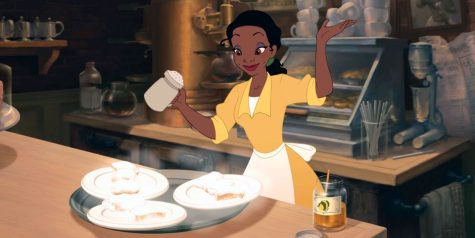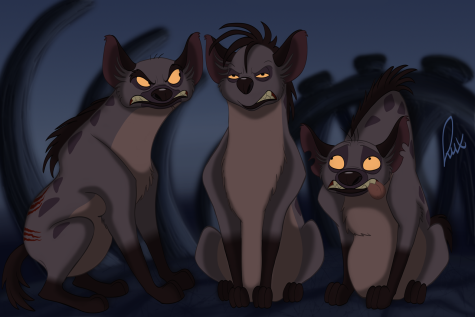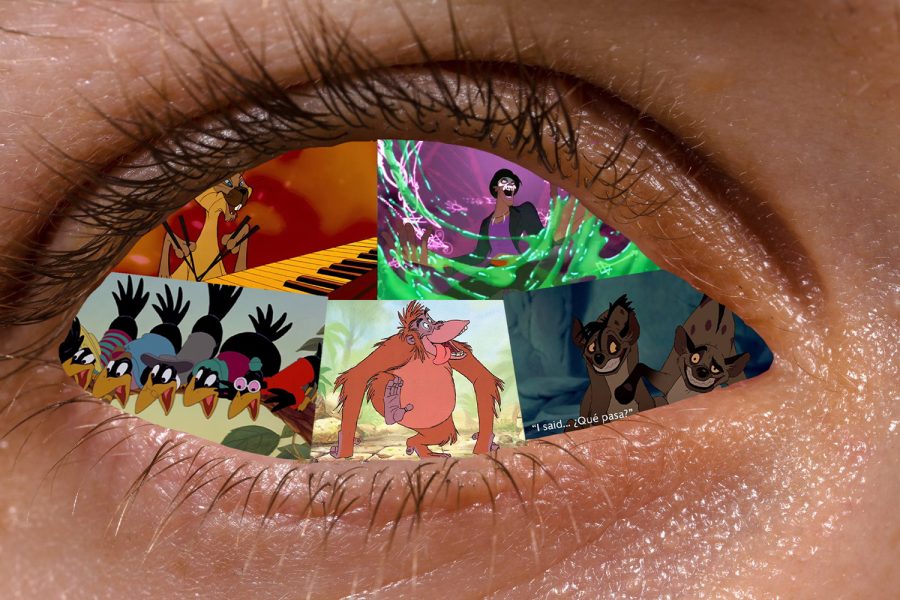Disney’s lack of diversity and use of racial stereotypes… a tale as old as time
Walt Disney Studios subtle use of racial stereotypes lead to children growing up with implicit bias against minorities.
The lack of minority representation and the usage of racial stereotypes in Disney movies negatively affects children of color. Looking at the vast vault of Disney films and Disney princesses, it is easy to notice that characters of color are painfully absent. Even when Disney incorporates characters from a variety of racial and cultural backgrounds, stereotypes of race and ethnicity persist. It is critical to look at the implications of these racist depictions on the generations of individuals who watch these films. Disney, as one of the largest producers of children’s films in the United States, according to statistica.com, has the responsibility to accurately and authentically portray diversity in its films.

Disney has a long history of using racial caricatures in its films that reinforce negative stereotypes. In The Princess and the Frog, Princess Tiana, the only Black Disney princess, is not fully represented. For three-quarters of the film, Tiana is a frog, symbolizing Disney’s reluctance to depict a Black princess. In fact, the only main African-American character in the movie who remains human is the villain.
Tiana is also the only Disney princess whose storyline revolves around her financial struggles. While Sleeping Beauty, Cinderella, Snow White, and Ariel all come from wealthy families and live in castles, Tiana works two jobs and her mother cleans houses. It is Tiana’s dream to own a restaurant, however, she does not achieve this dream until the end of the movie when she marries a man and he assists her in purchasing a restaurant. This demonstrates the franchise’s belief that a woman cannot achieve her dreams without the assistance of a man, as well as Disney’s belief that Tiana must struggle with financial difficulties as a result of her race. When compared to other Disney princesses, Tiana is clearly characterized as the “Black servant,” presenting Tiana and her mother within the same narrow scope of historical representations of Black womanhood.
Seven out of the 11 Disney princesses are white, according to mediamilwaukee.com. These ethnic princesses do not display the same feminine and beautiful attributes as white princesses. Snow White, Sleeping Beauty, and Belle all wear gowns, gloves, and have neatly-done hair. Disney also depicts these white princesses as well mannered and feminine. Princesses of color, however, do not share these elegant characteristics. Mulan, an Asian princess, is a warrior, Pocahontas is depicted as “savage like,” Moana is known for her rebellion, and Jasmine wears pants. This exemplifies Disney’s depiction of white as beautiful and civilized and people of color as other.

In Disney films, there is undeniable evidence of white privilege and binary color symbolism that associates white with goodness and black with evil. Snow White and the Seven Dwarfs features a wicked queen dressed in black, who lives in a black castle, has black rats, and there is a dangerous black forest containing black bats and black owls. On the contrary, Snow White is surrounded by white birds, the Prince rides a white horse, Snow White is laid to rest on white flowers, and after the Prince rescues her they ride off together towards a white castle.
Snow White’s complexion in the film is lighter than that of the Wicked Stepmother, demonstrating the ideology that whiteness is more than just a color, but a representation of goodness. Ever since its first film, Disney has exaggerated the whiteness of the main characters, subtly promoting an ideology of white supremacy.
Disney’s target audience is young and impressionable. Disney currently produces one-third of the market for children’s films according to cnbc.com. The majority of children turn to Disney for entertainment, and even adults enjoy Disney films on occasion. Studies have shown that it is important for children to see characters who not only look like them and their families but also sound like them. Children look up to Disney characters as inspirational figures, however, due to a lack of diversity, they are not getting the full picture, because only one prominent skin tone is represented. When a young child watches a favorite movie or television show, seeing characters who look like them has a significant impact. A study on the impact of TV exposure on elementary-aged children showed that, for young Black girls, Black boys, and white girls, watching teleivsion led to lower self-esteem. Conversely, for young white boys, watching television led to higher self-esteem.
White men predominantly run Disney according to thewrap.com. This could be why the company struggles with a lack of diversity. There are very few minority representatives on boards and in executive offices at the company.
It is imperative that Disney Studios and its executive producers recognize and acknowledge these serious problems and vow to make changes in order to ensure the mental health of children of all backgrounds across the globe. Disney is socially responsible for establishing standards for how diverse characters are portrayed in films, and they must do their part to challenge past and present stereotypes. Walt Disney Studios’ story of diversity is a tale as old as time, and audiences today hope to see a happily ever after soon.
Featured Image by Madison Hart ’24

Sophomore Madison is thrilled to begin her journalism career this year as a staff writer for the King Street Chronicle. She is eager to enhance her communication...



Diane McCarty • Dec 18, 2022 at 8:41 pm
The 30th anniversary edition of “Beauty and the Beast” certainly uses LOTS OF DIVERSITY. Maybe they are heading in a new direction???